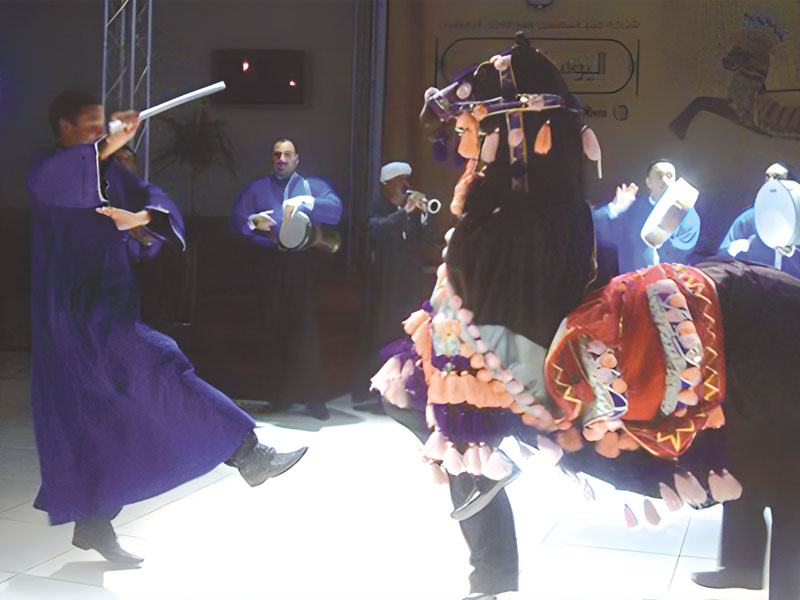Egyptian Folk dancing and its Culture Between reality and expectations
Issue 7

Hossam MuHsib - EGYPT
T he culture of dancing has emerged in the palaces and temples and was directly linked to official religion, and folk culture emerging from a popular faith and daily economic life, as evidenced by the archaeological references, and the forms of traditional dancing can be reformulated on the basis of its study, analysis, decoding its artistic codes, texts, and historical graphic evidences. The neglect of this class of Egyptian traditional culture is wrong and stops the formation of the full perception of this culture and the vocabulary it carries. During the past decades, some works on popular Egyptian dancing have been published according to the methods of the art of traditional dance, and did not touch the emergence of Egyptian folk dancing culture, its social and functional bases, and did not exposure the issues of dialogue between cultures, and the relationship between the customs and traditions .. Therefore, we consider the re-examination of dancing according to the Egyptian concept of folk culture The researcher refers to the status of dancing traditions in the Egyptian artistic culture and to the folk dancing in the Egyptian cultural map now, and emphasizes that we can not learn folk dancing only if we know and understand its steps, its own rhythm, music and social context, and clothes. We need to understand popular culture entirely in one context so that we can familiarize ourselves with the difference between popular dance learned by nature, within the context of the folk customs of a village and folk dance taught by a teacher of popular dancing, in this case it can not be considered a traditional dancing, but turns into a dancing theater because it is learned out of its environmental context and modern means are used in its education. It must be recognized that there is a problem in maintaining the Egyptian folk dancing which was affected by cultural changes resulting from the vulnerability of modern technology that has spread very fast within Egyptian society, (hence we must follow the example of a country such as Greece that has recognized this fact and has treated this problem by teach folk dancing in the programs of physical education in educational institutions, and teachers of physical education in Greece have received a certain amount of technical education to teach school and university students of Greek Folk dances in collaboration with specialized cultural organizations).







































































